Want to know how to kill weeds without killing your grass?
I’ve shared my top recommended methods in this guide for UK-based gardeners who want to safely get rid of weeds on their lawns.
✅ Key Takeaways:
Weeds get onto lawns as a result of seed spreading from the wind, animals, transplanted plants, and more.
Effective methods to safely kill or remove weeds without harming grass include removing weeds by hand, using corn gluten meal, and using diluted vodka or gin (yes really!).
You can prevent weeds from returning by re-seeding or re-turfing bare spots, keeping your lawn well watered, and avoiding introducing sources of exposure to weeds through your own actions.
Table of Contents
☘️ Where Do Weeds Come From?
Weeds are incredibly common in the environment, so there’s a high likelihood that they’ll grow on your lawn at some point.
The main way that weeds end up on your lawn is through the wind, which carries seeds from other gardens and outdoor spaces onto your grass. The seeds settle on the soil, it rains, and – voila! A weed has sprung.
Weed seeds are also spread by animals – so bad luck if your garden seems to attract all the birds (and therefore bird poo) in your neighbourhood.
Humans aren’t blame-free, either. We tread weed seeds onto our lawns from the soles of our shoes, and transplant soils and plants that are contaminated with weed seeds into our gardens.
Once you have one weed in your garden, chances are, the problem will spread. The weed will grow aggressively, dominating soil space and stunting grass growth.
When the weed sprouts seeds, these seeds will be carried to other parts of your lawn. Even mowing your grass – especially if you use a mulching mower – will spread weeds from one part of your garden to another.
🧐 How To Know If Your Lawn Has Weeds
There are a few obvious signs that your lawn has weeds:
There are flowers amongst the grass leaves, such as dandelions and daisies
Your grass grows at an uneven rate
Your lawn is patchy in parts or has different-colored growth in some sections
Parts of your lawn remain green even when your grass is yellow due to drought (many weeds can stay green even when there’s little access to water)
Not all weeds are big, tall, and obvious – especially if you regularly mow your garden! You won’t give most weeds a chance to make themselves truly distinguishable, even if they’re actively growing.
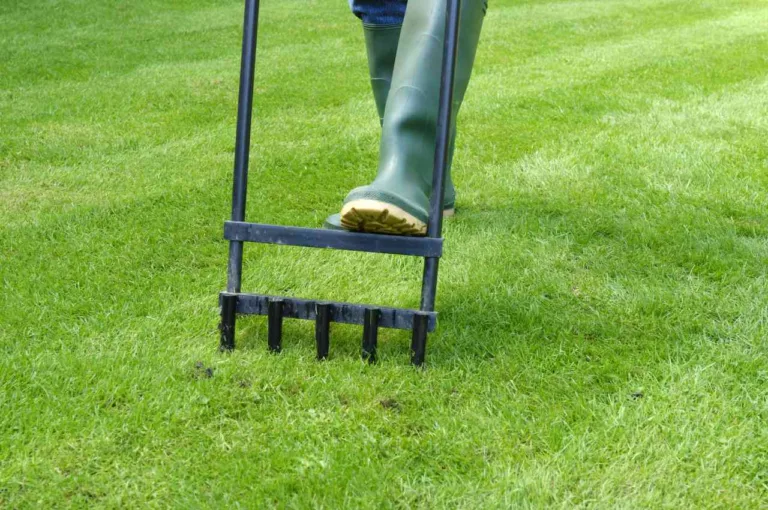
📋 6 Best Methods To Safely Kill Or Remove Weeds Without Harming Your Lawn
Let’s take a look at the 6 best methods to safely remove or kill weeds, not grass, in your garden.
🖐 Remove Weeds By Hand
A simple and effective weed removal method is to dig the weeds up by hand.
Simply choose a route and make your way around your lawn, stopping every time you see a weed. Use a small, sharp-edged spade or trowel to dig a hole beneath the weed, making sure to lift the entire weed.
You want to pull the whole weed and its root system out of the ground to prevent it from regrowing a few days later. Weeds really are that relentless!
Don’t have a trowel? You should be able to pull out most weeds by hand. Firmly grasp the weed around its thickest section, and pull.
The advantage of this technique is that it’s completely natural, and doesn’t require any chemicals or weed killers that could harm your lawn.
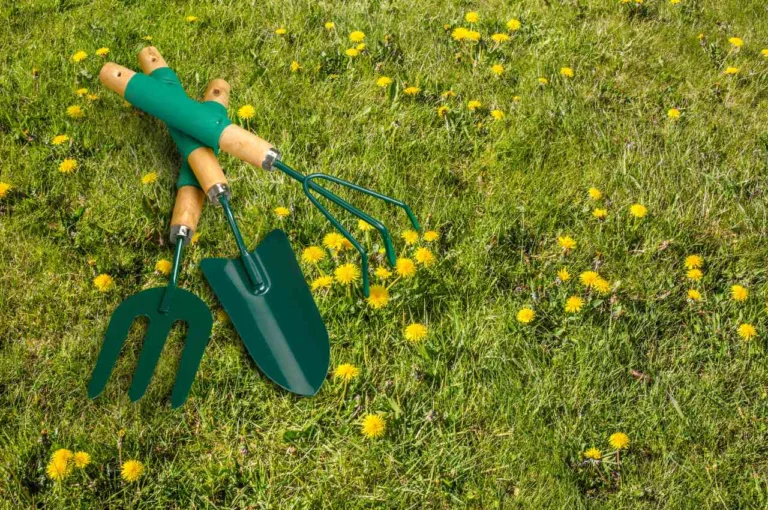
🌾 Use Corn Gluten Meal
Corn gluten meal is a great alternative to toxic chemicals for controlling weeds in domestic gardens.
This organic, protein-rich feed contains around 10% nitrogen, which, when applied to soil, decomposes gradually over a period of 3-4 months.
While corn gluten meal won’t prevent the formation of new plants, it will prevent existing weeds from growing – so you can stay one step ahead of your weeds, preventing them from becoming a major problem.
You can buy corn gluten from marketplaces online. Be careful to follow the manufacturer’s instructions using the product.
There are specific times when you should and shouldn’t use corn gluten – for instance, you shouldn’t apply corn gluten at the same time as overseeding your lawn because the product will stop grass seeds from germinating.
☠️ Use Selective Herbicides
If you prefer a quicker, easier method of lawn weed control, you can use a chemical weed killer to get the job done fast.
Look for a selective herbicide, which will do the job of killing weeds. not grass, helping to sustain healthy lawn grasses with no unwanted growth.
You can find herbicides designed to kill a range of weeds, including perennial weeds, annual weeds, broadleaf weeds, and other invasive weeds, while retaining healthy grass growth.
A selective herbicide offers a safe means of getting rid of weeds because it doesn’t harm your grass. However, you’ll struggle to find chemical-free herbicides, so if you have pets or children, or you just don’t want to put chemicals on your lawn, this method may not be for you.
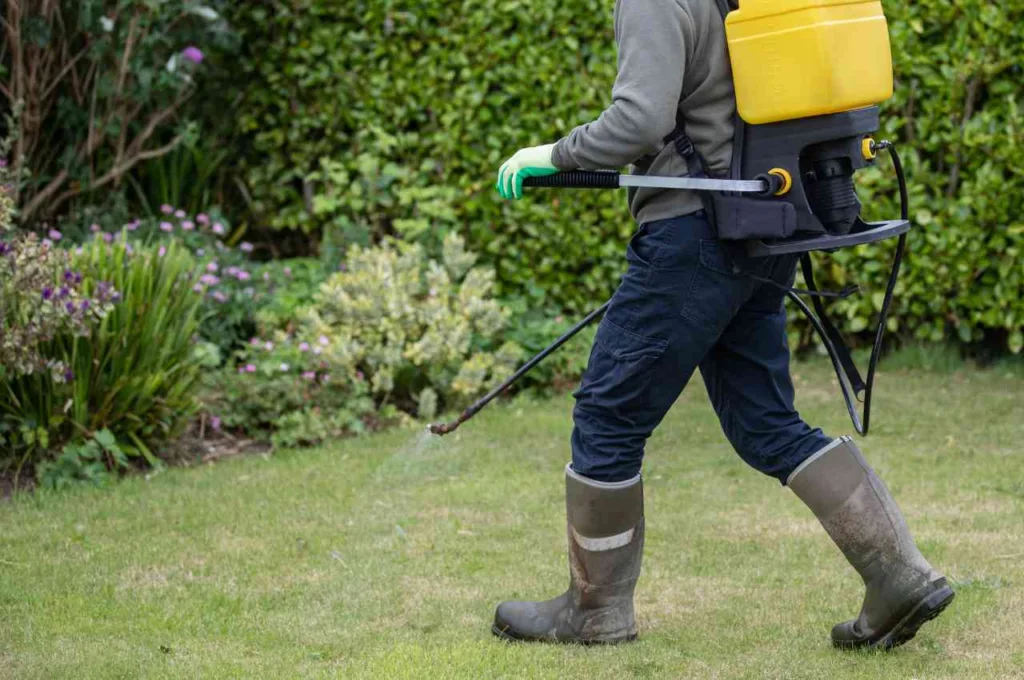
🚿 Spray Vodka Or Gin Onto The Weeds
It might sound like a ridiculous option, but vodka or gin has been touted by numerous experts as an effective, safe weed-killer that won’t harm your grass.
When you spray alcohol onto weeds, it evaporates very quickly into the air, causing the plant to dry out, eventually dying.
Diluted vodka is apparently the best option for killing weeds. Simply mix vodka and water – exact ratios aren’t given – and add the solution to a spray bottle before spraying it onto your weeds.
One lawn care expert recommended waiting until a sunny day to use this weed killing technique because the combination of the alcohol and sunlight will dehydrate and kill the weeds faster.
The bad news is that vodka won’t kill your weeds permanently – it’ll just attack their root systems and prevent them from growing for a few months.
✂️ Mow Frequently At A Low Height
Another option is to set your mower height to around 20-30 millilitres and try to mow at least once a week.
The more frequently you mow your lawn at a lower height, the more you’ll stunt weed growth.
Tall broadleaf weeds like dandelions typically have longer roots, and they’ll be unable to thrive if you continuously cut their stems. These weeds aim to grow their roots below ground and their stems above ground at equal rates. If they can’t, the plant begins to struggle, so the grass has the competitive edge and will eventually outgrow the weed.
Regular mowing your lawn is a slower, steadier process of weed control, so it won’t get rid of your weeds straight away – and it also won’t tackle moss or any laterally-growing weeds. However, it’s a good way to eliminate vertical weed growth over time.
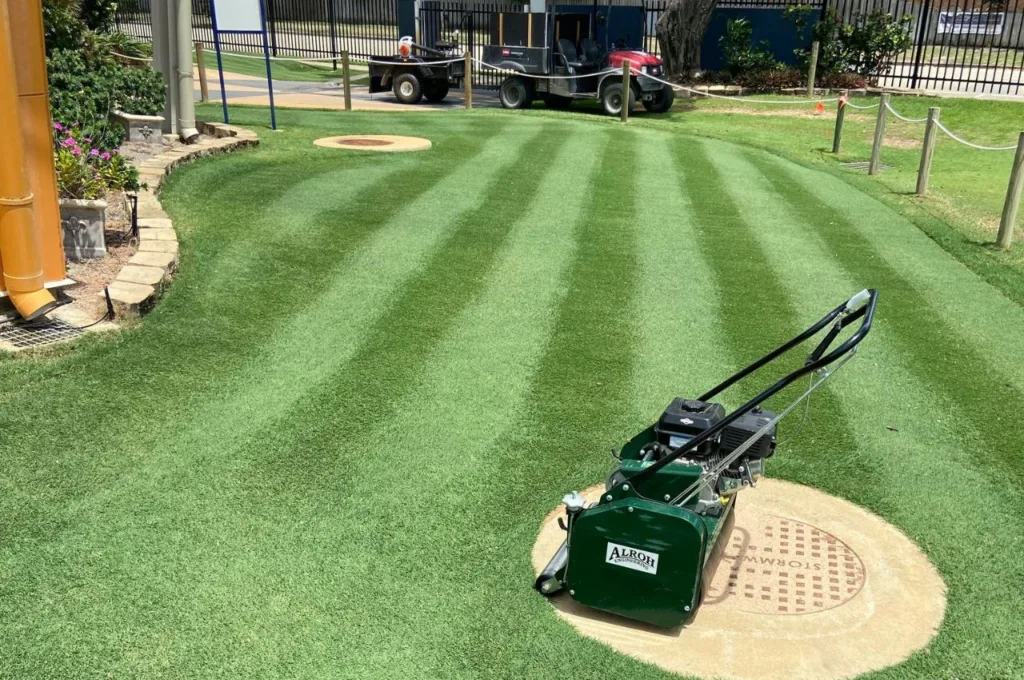
🌫 Aerate Your Lawn
If your lawn is hard, compacted, and dotted with weeds, aerating your lawn should help to reduce the weed issue.
Lawn aeration allows for nutrients, water, oxygen, and sunlight to effectively reach your lawn’s root system, promoting better-quality grass growth. The better your grass growth, the less likely that weeds will grow because the grass will smother the weeds.
You don’t necessarily need all the fancy equipment to aerate your lawn – a garden fork will suffice.
Push the fork around 8-10cm into the ground, then pull back, causing the grass to lift a little. Remove the fork, take two paces forward, and repeat the process. Continue in laps until you’ve aerated your entire lawn.
Aerating your lawn is another job to do as part of a broader maintenance program. It’s not a quick-fix solution for weeds, but it should help with weed control in the long run.

🚫 How To Prevent Weeds From Returning
Want to avoid the time-consuming job of hand-weeding or removing weeds from your grass every year? Here are my top tips to maintain a green lawn and encourage healthy grass growth with fewer weeds.
🌱 Re-Turf Or Re-Seed Bare Spots
Our first recommendation is to re-seed or re-turf bare spots on your lawn. Lawn weeds will take every opportunity to grow in space that isn’t already filled by grass, so establishing new grass growth will reduce the likelihood of weeds returning during the next growing season.
Ideally, you should re-seed or re-turf parts of your lawn in autumn or early spring, when weeds are growing at a slower rate.
💦 Keep Your Grass Well Watered
Weeds thrive in dry soil. The fungi and bacteria found naturally in soils, which break down weed seeds, need moisture to function. So, if your soil is dry and lacking in moisture, these growing conditions will prolong the viability of the weeds.
A simple method of long-term lawn weed control is to make sure your garden is always well watered.
In the UK, we’re no strangers to rain, so you don’t need to water your lawn except for during periods of drought. Lawns need to be watered around once a week during the dry summer months. Make sure to water deeply, so there’s enough saturation to maintain a healthy lawn through dry periods.
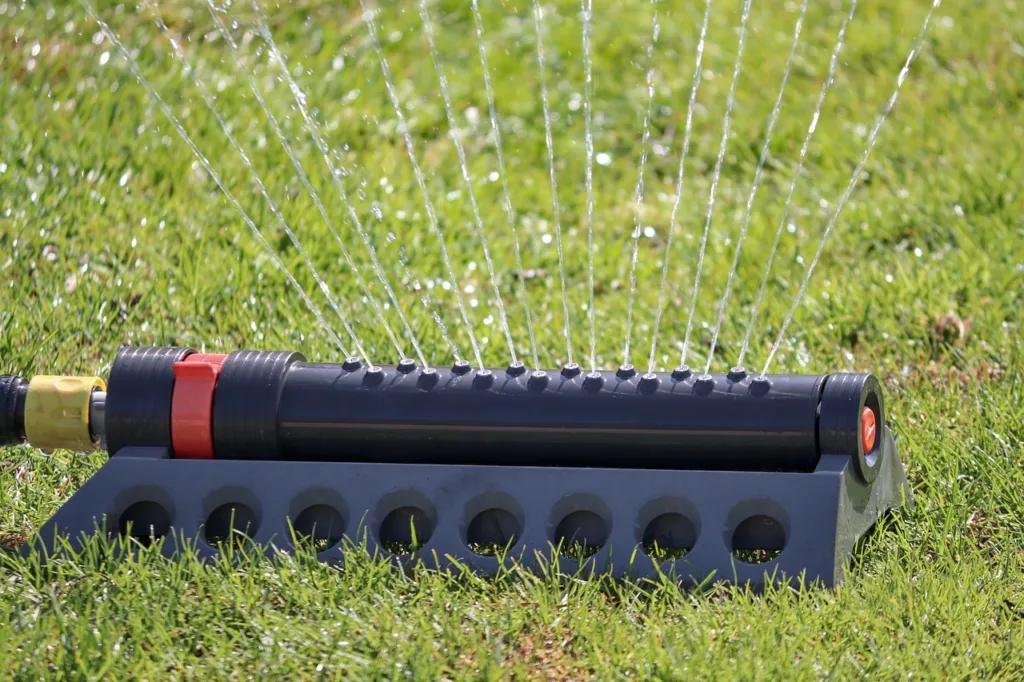
🍀 Avoid Introducing Weeds To Your Lawn
Unfortunately, there’s no way to completely prevent weeds from getting into your lawn. You can’t stop the wind from blowing, after all.
However, you can at least limit your lawn’s exposure to weeds through your own actions.
Avoid using fresh manure in your flower beds, since this often contains weed seeds that could end up getting onto your grass. Also avoid using a mulching mower while you have a weed issue, since the mower will spread mulched weeds to other parts of your garden.
When you’re buying plants to transplant into flowerbeds, visually inspect the plants before buying them to make sure there are no weeds contaminating the surrounding soil in the pot.
🏁 Final Word
Nobody wants a weedy garden – but you also don’t want to damage your grass with your method of weed removal.
Hopefully, you now know the best ways to remove or kill weeds without harming your lawn.
Feel free to email us if you have any further questions, or you have a method of safe, easy lawn weed removal that has worked well for you.
❓ FAQ
☕️ Is boiling water a safe weed killer?
No, boiling water isn’t a safe weed killer. While scalding hot water is an effective way to kill weeds (right down to the weed roots), it’ll also kill any other plant it comes into contact with, so it’ll kill patches of your lawn and increase the likelihood of further weed issues going forward. You should only use boiling water to kill weeds on non-grassy areas, such as weeds growing in the cracks between your lawn paving.
👷 What’s the safest moss killer?
The safest way to kill moss on your lawn is to use iron sulfate. You can use an iron sulfate weed killer to kill moss within 3-4 days. The moss will turn brown or black and die, while your grass will remain unaffected. In fact, iron sulfate is actually an ingredient in many fertilizers because it helps to promote green, healthy grass growth by improving the cellular structure of the grass leaf.
🧂 Will vinegar kill weeds permanently?
No, vinegar doesn’t usually kill weeds permanently. While vinegar is an effective way to kill the leaves of most broadleaf weeds, it may not reach the root system, causing the weeds to grow back again. I don’t recommend vinegar as a natural lawn weedkiller because it’ll also kill your grass.
♻️ How do I kill weeds in my lawn without killing grass naturally?
One possibly effective method of killing weeds in your lawn naturally without killing grass is to spray vodka or gin on your weeds. The vodka should cause the weeds to dry out and die without killing your grass.
